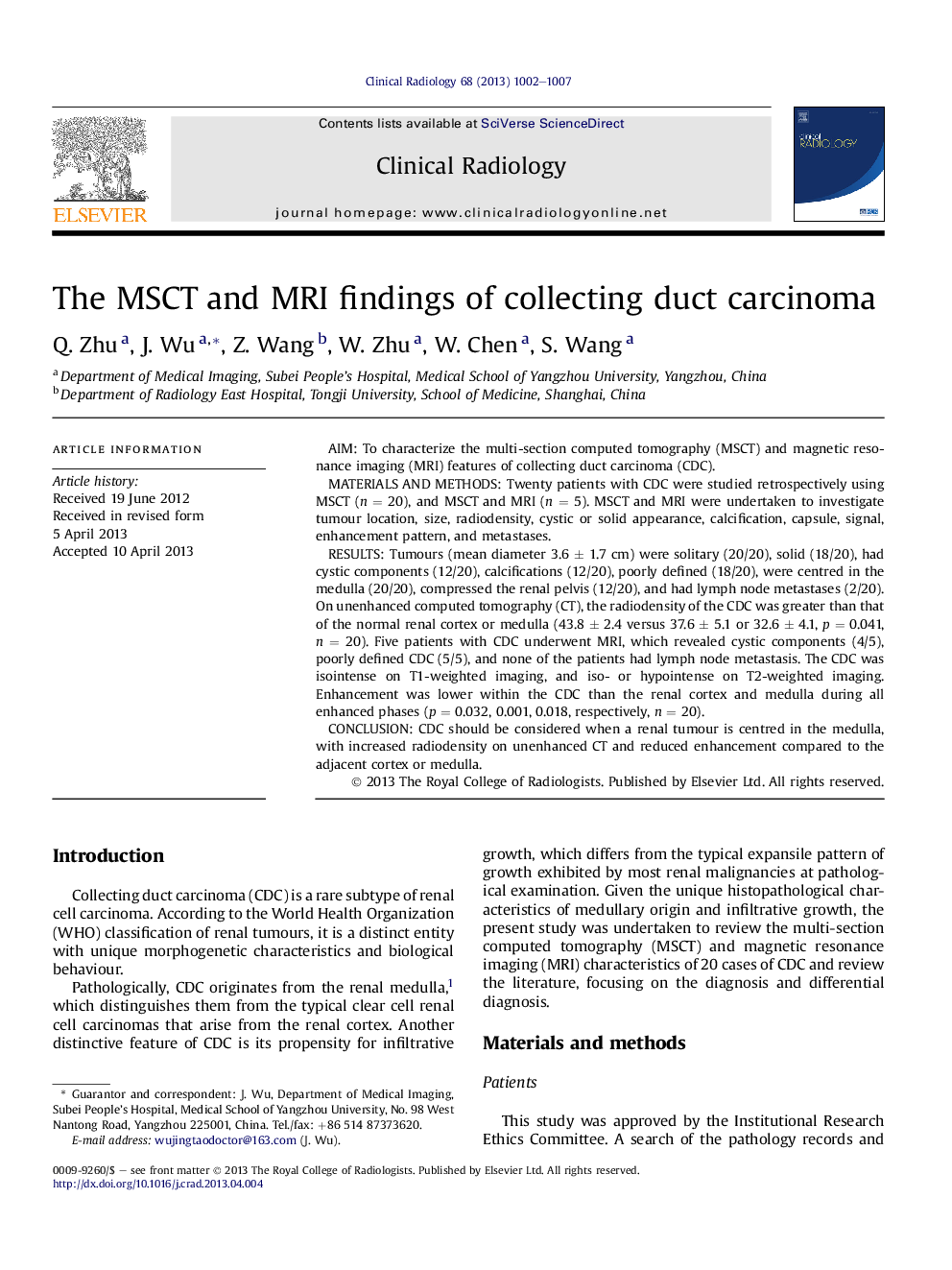| Article ID | Journal | Published Year | Pages | File Type |
|---|---|---|---|---|
| 3982451 | Clinical Radiology | 2013 | 6 Pages |
AimTo characterize the multi-section computed tomography (MSCT) and magnetic resonance imaging (MRI) features of collecting duct carcinoma (CDC).Materials and methodsTwenty patients with CDC were studied retrospectively using MSCT (n = 20), and MSCT and MRI (n = 5). MSCT and MRI were undertaken to investigate tumour location, size, radiodensity, cystic or solid appearance, calcification, capsule, signal, enhancement pattern, and metastases.ResultsTumours (mean diameter 3.6 ± 1.7 cm) were solitary (20/20), solid (18/20), had cystic components (12/20), calcifications (12/20), poorly defined (18/20), were centred in the medulla (20/20), compressed the renal pelvis (12/20), and had lymph node metastases (2/20). On unenhanced computed tomography (CT), the radiodensity of the CDC was greater than that of the normal renal cortex or medulla (43.8 ± 2.4 versus 37.6 ± 5.1 or 32.6 ± 4.1, p = 0.041, n = 20). Five patients with CDC underwent MRI, which revealed cystic components (4/5), poorly defined CDC (5/5), and none of the patients had lymph node metastasis. The CDC was isointense on T1-weighted imaging, and iso- or hypointense on T2-weighted imaging. Enhancement was lower within the CDC than the renal cortex and medulla during all enhanced phases (p = 0.032, 0.001, 0.018, respectively, n = 20).ConclusionCDC should be considered when a renal tumour is centred in the medulla, with increased radiodensity on unenhanced CT and reduced enhancement compared to the adjacent cortex or medulla.
